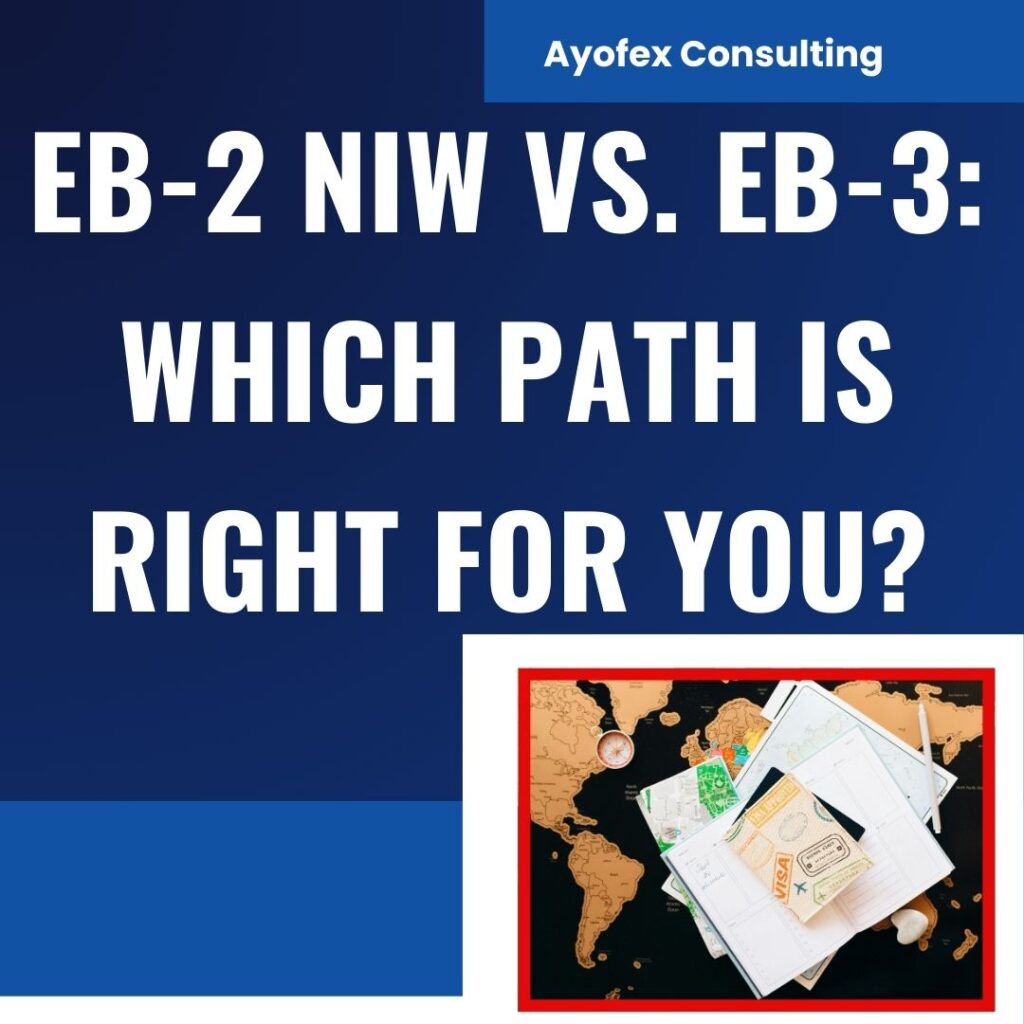Choosing the right immigration pathway can be a complex decision for professionals seeking to establish themselves in the U.S. Both EB-2 NIW (National Interest Waiver) and EB-3 offer viable routes to obtaining a green card, but they come with distinct qualifications and processes. Here’s what you need to know to make an informed choice between the two options.
Understanding EB-2 NIW
The EB-2 NIW category allows applicants to seek a green card without a specific job offer or employer sponsorship. Here’s what makes EB-2 NIW a great option:
- National Interest Requirement: The key to a successful EB-2 NIW petition is proving that your work substantially benefits the United States’ national interests. This could be in fields such as science, healthcare, technology, education, or arts, among others.
- Advanced Skills or Qualifications: Applicants typically need an advanced degree (master’s or higher) or exceptional ability in their profession, demonstrating their expertise through achievements, credentials, and tangible contributions to their field.
- No Employer Sponsorship Needed: Unlike other employment-based visas, EB-2 NIW petitioners can self-petition. This means you can file directly without relying on an employer.
- Skip Labor Certification (PERM): EB-2 NIW bypasses the PERM labor certification, a time-consuming process where an employer must prove that no qualified U.S. workers are available for the job. This streamlined process can save valuable time.
Who should consider EB-2 NIW? If your work has a demonstrated impact on national interests and you meet the qualifications for advanced or exceptional abilities, this option offers independence, faster processing (compared to certain other categories), and greater flexibility.
Understanding EB-3
The EB-3 category is geared towards individuals with a job offer in the U.S. This pathway involves three primary categories:
- Skilled Workers: Requires at least two years of job experience or training.
- Professionals: Individuals with a bachelor’s degree or its equivalent.
- Unskilled Workers: Jobs that require less than two years of training or experience.
Key aspects of EB-3 include:
- Full-Time Job Offer Requirement: Unlike the EB-2 NIW, EB-3 applicants must have a permanent job offer from a U.S. employer. Your employer will sponsor your petition.
- PERM Labor Certification: EB-3 applicants need to go through the labor certification process (PERM), which verifies that there are no qualified U.S. workers willing or available to take the job.
- Lower Qualification Threshold: While the EB-2 NIW has stricter criteria and requires exceptional ability or advanced degrees, EB-3 is more inclusive, making it suitable for a broader range of professionals.
Who should consider EB-3? This option is ideal for individuals with a job offer in hand, particularly those who may not meet the stringent criteria for EB-2 NIW. However, it’s worth noting that the PERM process may involve a longer timeline due to labor market testing.
Making the Right Choice
When deciding between EB-2 NIW and EB-3, consider your qualifications, job status, and long-term career goals. If you have a job offer from a U.S. employer, the EB-3 pathway offers a straightforward route. For those whose work has a significant impact on national interest and wish to avoid the dependency on employer sponsorship, EB-2 NIW may be the best fit.
Tips for Success
- Document Your Achievements: Whether applying for EB-2 NIW or EB-3, your case hinges on solid evidence. Ensure you have detailed proof of your qualifications, awards, professional achievements, and any contributions to the field or national interest.
- Seek Expert Advice: Immigration laws can be complex. Consider consulting an immigration attorney with experience in EB-2 NIW and EB-3 cases for tailored guidance.
Stay informed about the nuances of these pathways, and ensure that your application highlights your strengths and contributions to maximize your chances for success!

